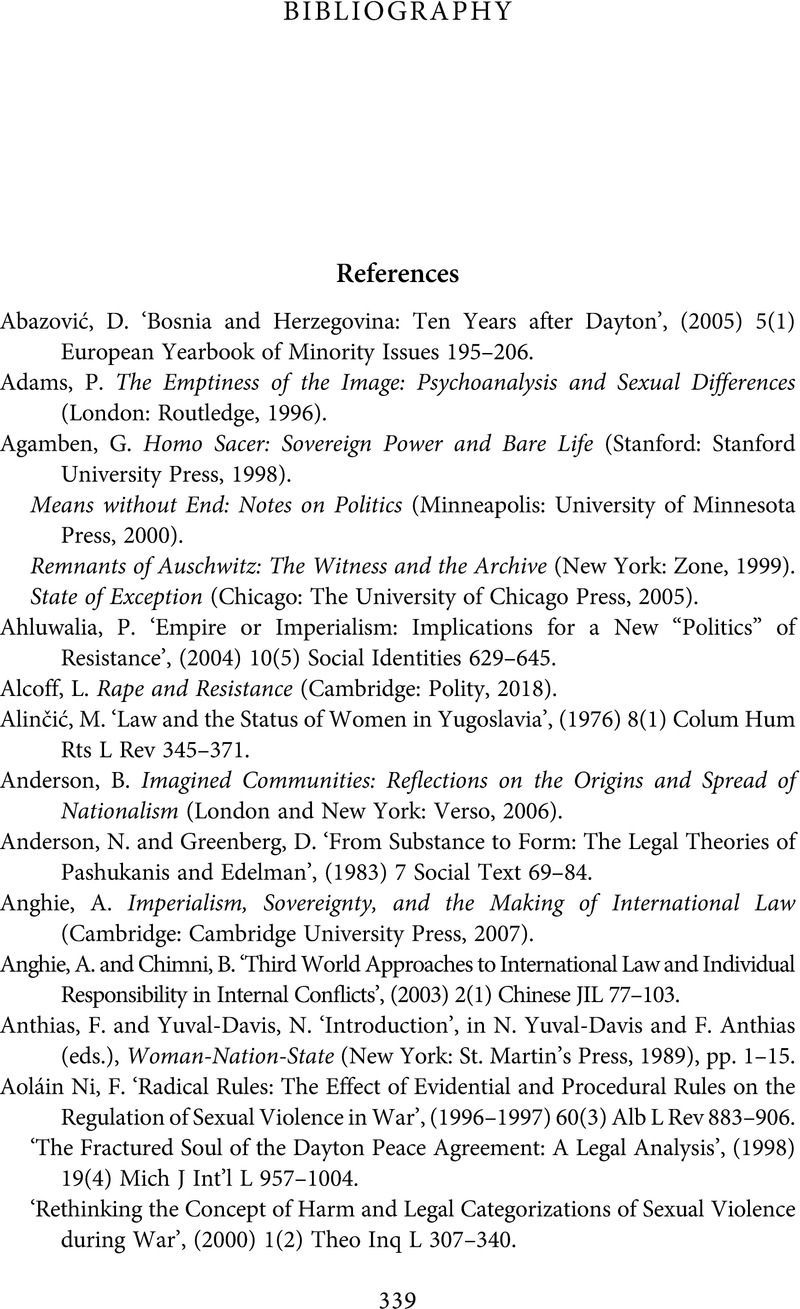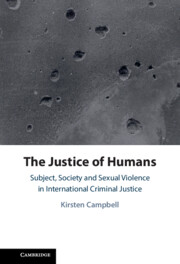Book contents
- The Justice of Humans
- The Justice of Humans
- Copyright page
- Dedication
- Contents
- Figures
- Acknowledgements
- Abbreviations
- Note on Case Citation Abbreviations
- 1 The Justice of Humans?
- Part I Subjectivity and Sociality in Contemporary International Criminal Law
- Part II The Women’s Court and Transformative Gender Justice
- Bibliography
- Index
- References
Bibliography
Published online by Cambridge University Press: 08 December 2022
- The Justice of Humans
- The Justice of Humans
- Copyright page
- Dedication
- Contents
- Figures
- Acknowledgements
- Abbreviations
- Note on Case Citation Abbreviations
- 1 The Justice of Humans?
- Part I Subjectivity and Sociality in Contemporary International Criminal Law
- Part II The Women’s Court and Transformative Gender Justice
- Bibliography
- Index
- References
Summary

- Type
- Chapter
- Information
- The Justice of HumansSubject, Society and Sexual Violence in International Criminal Justice, pp. 339 - 363Publisher: Cambridge University PressPrint publication year: 2022



